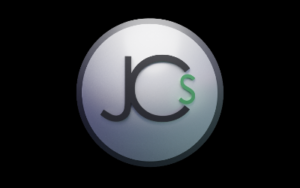Menu Terms & Conditions Privacy Policy Cookie Policy J. CAMARENA...
Read MoreJ. CAMARENA STUDIO - BILINGUAL DIGITAL MARKETING SERVICES
Navigating the Digital Seas: A Beginner's Guide to Paid Traffic
In today’s competitive online landscape, paid traffic acts as a powerful engine that can propel your website to new heights quickly and effectively. This guide is crafted for beginners looking to explore the bustling world of paid traffic, offering a step-by-step approach to launching your first campaigns.
What is Paid Traffic?
Paid traffic involves purchasing ads to drive visitors to your website or landing page. These ads can appear on search engines, social media platforms, and other websites. Unlike organic traffic, which grows over time through SEO, paid traffic is instantaneous and can be precisely targeted to reach specific audiences.
Why Focus on Paid Traffic?
Immediate Results: Paid ads start driving traffic as soon as they go live.
Targeted Reach: You can target ads based on demographics, interests, behaviors, and more.
Scalability: Easily increase your budget to boost traffic or scale back when needed.
How to Drive Paid Traffic
Here’s a straightforward strategy for beginners eager to tap into the potential of paid traffic:
1. Set Clear Objectives
Before you launch any paid campaigns, define what you want to achieve. Are you looking to generate leads, increase sales, or boost brand awareness? Your goals will dictate the type of campaigns you run and how you measure success.
2. Choose the Right Platforms
Different platforms serve different purposes:
Google Ads: Great for capturing demand when users search for specific terms.
Facebook Ads: Excellent for building brand awareness and targeting based on detailed demographics.
LinkedIn Ads: Ideal for B2B marketing.
3. Create a Budget
Decide how much you are willing to spend on your campaigns. Start small to test what works and what doesn’t. Remember, different keywords and targeting options will have varying costs.
4. Craft Compelling Ads
Your ads need to catch the eye and convey your message succinctly. Use engaging images or videos and clear, action-oriented copy. Make sure your ads are tailored to the audience of the platform you’re using.
5. Build Optimized Landing Pages
Ensure that the landing page your ad links to is optimized to convert. It should be relevant to the ad and provide a clear, easy path to conversion, whether that’s making a purchase, signing up for a newsletter, or another action.
6. Target Your Audience Precisely
Use the targeting tools available on the advertising platform to direct your ads to the right people. You can target based on location, age, interests, and much more to ensure your ads are seen by your ideal customer.
7. Monitor and Optimize
Paid advertising requires ongoing adjustments. Monitor your ads’ performance regularly using tools provided by the ad platforms. Analyze metrics like click-through rate (CTR) and conversion rate to understand what’s working and optimize your campaigns accordingly.
8. A/B Testing
Experiment with different versions of your ads to see what performs best. Test different headlines, images, ad copy, and calls to action (CTAs). This will help you refine your approach and improve your ad effectiveness over time.
Conclusion
Embarking on the journey of paid traffic can accelerate your website’s growth and offer valuable insights into your target audience. While it involves upfront investment, the ability to generate immediate and measurable results makes paid advertising a critical tool in any digital marketer’s arsenal. As with any expedition into new waters, start with careful planning, adjust your sails as you learn, and always keep a keen eye on your data for the best route to success.
Latest Blog Posts
Check Out Some of Our blog posts with news and highlights about digital marketing
Discover Digital Success with J. Camarena Studio: Your SEO and Paid Traffic Experts
Menu Terms & Conditions Privacy Policy Cookie Policy J. CAMARENA...
Read MoreStarting from Scratch: Should New Businesses Begin with Organic or Paid Traffic for Product Sales?
Menu Terms & Conditions Privacy Policy Cookie Policy J. CAMARENA...
Read More
